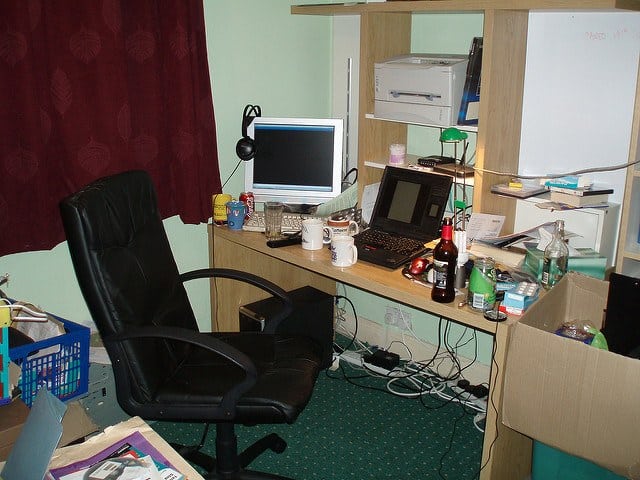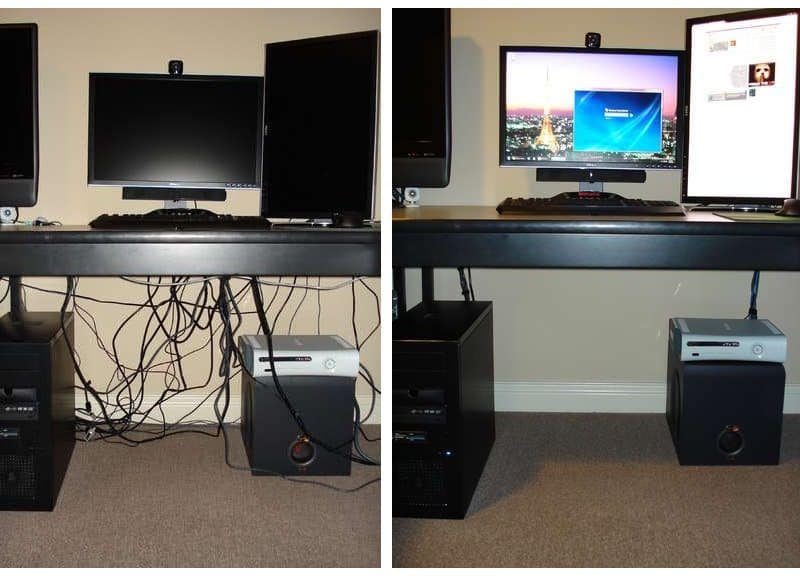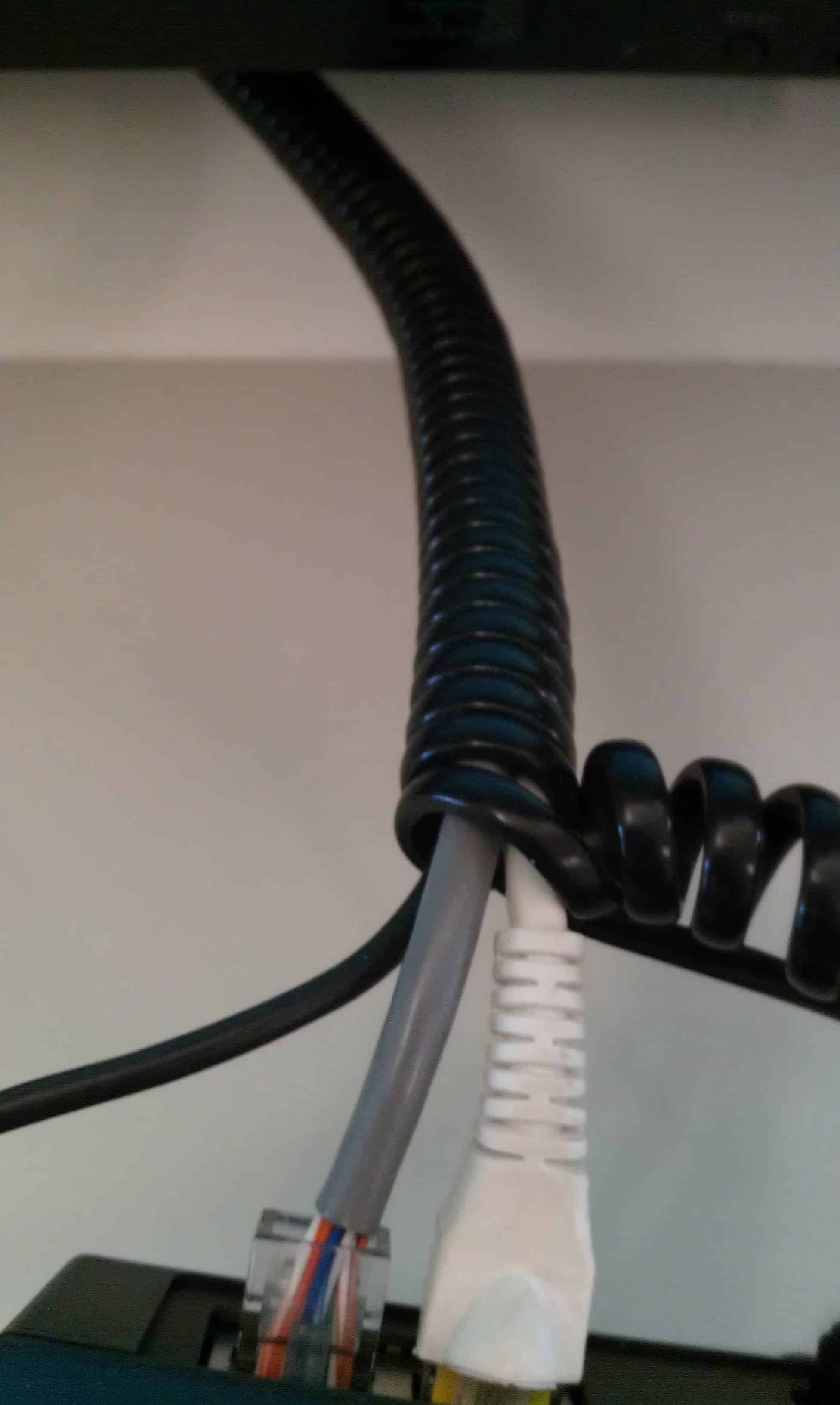Notice Where Things End Up
I’m assuming you’ve already had your office space for a while, that you’ve noticed that that clutter has become unmanageable, and that’s why you find yourself reading this post. Your first step before cleaning everything up and getting out from underneath the overwhelm is to notice where things ended up before you had systems in place. Notice if you happen to always put bills to your left in a messy stack before and after you pay them. Do you find that they always end up in the same heap that you have to search through?
Why do this?
Sometimes our habits answer questions like this for us. That’s why I find it easier to organize a space after you’ve lived in it for a while, rather than getting all of the shiny tools that seem popular on organization boards on Pinterest or buying whatever it is that they have in stock at The Container Store. Pay attention to how you end up using a space before committing to how things should be placed.
Take notes–heck, even take a picture! Use your smartphone to take a shot of places in your work space that are cluttered. Your desk, your supply closet, etc. That way you can remember what ended up where incidentally and you can create organized solutions in that space.
Make Sure Pathways aren’t Blocked
This can also be a result of having too many items. Bulkier items, like furniture, are often culprits for taking up much-needed space in your office. Ideally your office will only have the bare essentials, and a supply closet or area could have multiples of those necessities that you find yourself needing to replenish frequently. It’s sensible to have chairs for clients to sit opposite of your desk but any extra furniture may cause crowding.
Clear Your Desk
The whole thing. Go ahead. Even take your monitor down so that your desk can get a good wipe down. You’re starting fresh.
Conquer the Wire Jungle
It’s likely that you have a lot of wires around your desk, all crossed and jumbled. Especially if you have many different electronics being used in the space. Culprits would include a desktop computer with multiple monitors along with speakers, a paper shredder, a fax machine, printer, scanner, router, and a backup power source. This is a good opportunity to take stock of the electronics you’re consistently using and to consider if there’s an updated, integrated version. It’d be ideal for your printer to have the capability to scan, fax, and copy documents in addition to traditional printing. Is it time for an upgrade?
As you return your most essential items to your desk space and plug things in, it’s in your best interest to not have a tangled wire mess on your hands. This is only partially an aesthetic choice if your desk doesn’t have a backing for the wires to hide behind. It also will make it easier for you to make adjustments to your hardware and replace or upgrade items as necessary in the future.
Here are some examples of cheap and simple computer wire management systems:
Using only binder clips, screws and washers
Using pegboard and zip ties
Telephone cording to gather wires
Go Through Sets of Items and Purge
Use Technology To Your Advantage
Save the Paperwork for Last
Should you go paperless?
Different Spaces Within Your Office
Having specific spaces designated for items and tasks can give you the ability to focus better than trying to do it all in one space. Try out some of the following specified areas for size.
Digital + Non-digital areas
Catch all Area
It’s best to have a space where you can place your incoming items so that the items won’t get strewn about. The catch all area is where you’d place your keys and wallet, incoming documents–whatever you walk in the room with. It should also be placed at the most accessible area, like right next to the door to the room if that applies. A catch-it space should have: 1) a credenza or tray for documents; 2) a shelf, hooks, or a box in which to place important items; and 3) a trashcan.
Trash
Organizers and Drawers
How to Organize an Office Based on Feng Shui
Look to the ancient Chinese Practice of feng shui if you really want to feel like your space is maximized for productivity and good vibes. The metaphysical and quasi-philosophical system seeks to harmonize people with their environment. It’s believed that the outer environment reflects that of the mind. The practice seeks to create a sense of calm in a space. Adding motivating art to your office space and plants to increase the air quality are both known to increase the feng shui of your office space.
Having your back to a window, door or overall office traffic can take away your energy according to feng shui. It’s called having a weak feng shui backing. If you’re not one to take Far East beliefs into consideration, think of this from a practical standpoint. If people are walking behind you frequently and you must turn around to see who it is, you’re spending more energy than you would glancing over the side of your computer. Tilt your office chair in such a way that you won’t have high traffic behind you to strengthen your feng shui backing. Another suggestion is to create a wall of big and lush plants behind you.
Having your office organized based on feng shui isn’t just for people who have large amounts of space and options. You can still apply feng shui to a small office with no windows or even a cubicle.
Make it Cozy
Once you have a space that’s organized and has the right energy, make it comfortable! Add personal items so that the space is inviting. But, very few! You don’t want clutter to accrue again.
Create Habits to Make these Changes Last
You shouldn’t let your effort go to waste if you’ve put the kind of work and effort that I’ve outlined above into organizing your office. But if you did, you wouldn’t be the first to backtrack all of the work you’ve done. Ensure that you won’t go back to your old, cluttered, disorganized ways by putting routines in place that will keep your space tidy and productive.
Separate Paperwork Daily
Going through paperwork isn’t a huge task when you do it frequently. You should sort through incoming mail immediately upon receiving it. If you do this, it should only take ten minutes or so. If not, it piles up quickly.
Take Five
We know what the end of a workday generally looks like: a rush to get out of the door. So we understand why putting things back in their place would not be of the top priority for you. But, again, once you’ve gone through the work and learned how to organize an office, you really shouldn’t allow your old bad habits or your rush to get home get in the way of keeping up with a peaceful work life. So, each day before you leave your work space, take five or ten minutes to put everything back in its place.
Apply this to your small business
Now, try this…
Create an office space that is warm, inviting and organized using the tips above. You’ll find it peaceful for everything to have a place and surely be motivated to find other places in your life that need a little sprucing up. If that’s the case, hop on over to our post about how to conquer your inbox and you’ll learn the beauty of organizing your digital space as well as your physical space.






